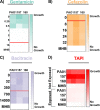Staphylococcus aureus Breast Implant Infection Isolates Display Recalcitrance To Antibiotic Pocket Irrigants
- PMID: 36507629
- PMCID: PMC9927092
- DOI: 10.1128/spectrum.02884-22
Staphylococcus aureus Breast Implant Infection Isolates Display Recalcitrance To Antibiotic Pocket Irrigants
Abstract
Breast implant-associated infections (BIAIs) are the primary complication following placement of breast prostheses in breast cancer reconstruction. Given the prevalence of breast cancer, reconstructive failure due to infection results in significant patient distress and health care expenditures. Thus, effective BIAI prevention strategies are urgently needed. This study tests the efficacy of one infection prevention strategy: the use of a triple antibiotic pocket irrigant (TAPI) against Staphylococcus aureus, the most common cause of BIAIs. TAPI, which consists of 50,000 U bacitracin, 1 g cefazolin, and 80 mg gentamicin diluted in 500 mL of saline, is used to irrigate the breast implant pocket during surgery. We used in vitro and in vivo assays to test the efficacy of each antibiotic in TAPI, as well as TAPI at the concentration used during surgery. We found that planktonically grown S. aureus BIAI isolates displayed susceptibility to gentamicin, cefazolin, and TAPI. However, TAPI treatment enhanced biofilm formation of BIAI strains. Furthermore, we compared TAPI treatment of a S. aureus reference strain (JE2) to a BIAI isolate (117) in a mouse BIAI model. TAPI significantly reduced infection of JE2 at 1 and 7 days postinfection (dpi). In contrast, BIAI strain 117 displayed high bacterial burdens in tissues and implants, which persisted to 14 dpi despite TAPI treatment. Lastly, we demonstrated that TAPI was effective against Pseudomonas aeruginosa reference (PAO1) and BIAI strains in vitro and in vivo. Together, these data suggest that S. aureus BIAI strains employ unique mechanisms to resist antibiotic prophylaxis treatment and promote chronic infection. IMPORTANCE The incidence of breast implant associated infections (BIAIs) following reconstructive surgery postmastectomy remains high, despite the use of prophylactic antibiotic strategies. Thus, surgeons have begun using additional antibiotic-based prevention strategies, including triple antibiotic pocket irrigants (TAPIs). However, these strategies fail to reduce BIAI rates for these patients. To understand why these therapies fail, we assessed the antimicrobial resistance patterns of Staphylococcus aureus strains, the most common cause of BIAI, to the antibiotics in TAPI (bacitracin, cefazolin, and gentamicin). We found that while clinically relevant BIAI isolates were more susceptible to the individual antibiotics compared to a reference strain, TAPI was effective at killing all the strains in vitro. However, in a mouse model, the BIAI isolates displayed recalcitrance to TAPI, which contrasted with the reference strain, which was susceptible. These data suggest that strains causing BIAI may encode specific recalcitrance mechanisms not present within reference strains.
Keywords: Pseudomonas aeruginosa; Staphylococcus aureus; antibiotic resistance; breast implant infections; triple antibiotic pocket irrigant.
Conflict of interest statement
The authors declare a conflict of interest. Myckatyn receives royalties for product development, funds for an investigator initiated trial associated with acellular dermal matrices in breast reconstruction, and advisory board remuneration from RTI Surgical. He receives an investigator initiated award from Sientra that studies the metabolomics of breast tissue expander infection. None relate directly to the topic matter of this study and no industry funds were received for completing this study. He has no other disclosures. All other authors declare no other conflicts of interest.
Figures







Similar articles
-
Pharmacokinetics of Locally Applied Antibiotic Prophylaxis for Implant-Based Breast Reconstruction.JAMA Netw Open. 2023 Dec 1;6(12):e2348414. doi: 10.1001/jamanetworkopen.2023.48414. JAMA Netw Open. 2023. PMID: 38113041 Free PMC article. Clinical Trial.
-
The Efficacy of Breast Implant Irrigant Solutions: A Comparative Analysis Using an In Vitro Model.Plast Reconstr Surg. 2020 Aug;146(2):301-308. doi: 10.1097/PRS.0000000000007028. Plast Reconstr Surg. 2020. PMID: 32740580
-
Optimizing breast pocket irrigation: an in vitro study and clinical implications.Plast Reconstr Surg. 2000 Jan;105(1):334-8; discussion 339-43. doi: 10.1097/00006534-200001000-00051. Plast Reconstr Surg. 2000. PMID: 10627003
-
Antibiotic Resistance in the Treatment of Staphylococcus aureus Keratitis: a 20-Year Review.Cornea. 2015 Jun;34(6):698-703. doi: 10.1097/ICO.0000000000000431. Cornea. 2015. PMID: 25811722 Free PMC article. Review.
-
When antibiotics fail: a clinical and microbiological perspective on antibiotic tolerance and persistence of Staphylococcus aureus.J Antimicrob Chemother. 2020 May 1;75(5):1071-1086. doi: 10.1093/jac/dkz559. J Antimicrob Chemother. 2020. PMID: 32016348 Review.
Cited by
-
Diagnostic and therapeutic strategies in combating implanted medical device-associated bacterial biofilm infections.Folia Microbiol (Praha). 2025 Apr;70(2):321-342. doi: 10.1007/s12223-025-01242-y. Epub 2025 Jan 27. Folia Microbiol (Praha). 2025. PMID: 39865215 Review.
-
Genomics Reveal Staphylococcus aureus Persists during Long-term Urinary Catheterization Despite Antimicrobial Therapy and Catheter Exchanges.Res Sq [Preprint]. 2025 May 29:rs.3.rs-6702271. doi: 10.21203/rs.3.rs-6702271/v1. Res Sq. 2025. PMID: 40502784 Free PMC article. Preprint.
-
In vitro antibacterial, antibiofilm activities, and phytochemical properties of Posidonia oceanica (L.) Delile: An endemic Mediterranean seagrass.Heliyon. 2024 Aug 3;10(15):e35592. doi: 10.1016/j.heliyon.2024.e35592. eCollection 2024 Aug 15. Heliyon. 2024. PMID: 39170414 Free PMC article.
-
Staphylococcus aureus nasal carriage before breast reconstruction: antibiotic resistance, biofilm formation, and virulence genes-a single center in vitro observation.Front Microbiol. 2025 Jun 19;16:1610739. doi: 10.3389/fmicb.2025.1610739. eCollection 2025. Front Microbiol. 2025. PMID: 40611953 Free PMC article.
-
A prospective randomized clinical trial to assess antibiotic pocket irrigation on tissue expander breast reconstruction.Microbiol Spectr. 2023 Sep 27;11(5):e0143023. doi: 10.1128/spectrum.01430-23. Online ahead of print. Microbiol Spectr. 2023. PMID: 37754546 Free PMC article.
References
-
- Barr SP, Topps AR, Barnes NL, Henderson J, Hignett S, Teasdale RL, McKenna A, Harvey JR, Kirwan CC, Northwest Breast Surgical Research Collaborative . 2016. Infection prevention in breast implant surgery—a review of the surgical evidence, guidelines and a checklist. Eur J Surg Oncol 42:591–603. doi:10.1016/j.ejso.2016.02.240. - DOI - PubMed
-
- Olsen MA, Nickel KB, Fox IK, Margenthaler JA, Ball KE, Mines D, Wallace AE, Fraser VJ. 2015. Incidence of surgical site infection following mastectomy with and without immediate reconstruction using private insurer claims data. Infect Control Hosp Epidemiol 36:907–914. doi:10.1017/ice.2015.108. - DOI - PMC - PubMed
Publication types
MeSH terms
Substances
Grants and funding
LinkOut - more resources
Full Text Sources
Medical

